The Mom Who Climbed Kilimanjaro
- Wednesday, 18 January 2012 17:35
- Last Updated: Thursday, 19 January 2012 11:56
- Published: Wednesday, 18 January 2012 17:35
- Hits: 5822
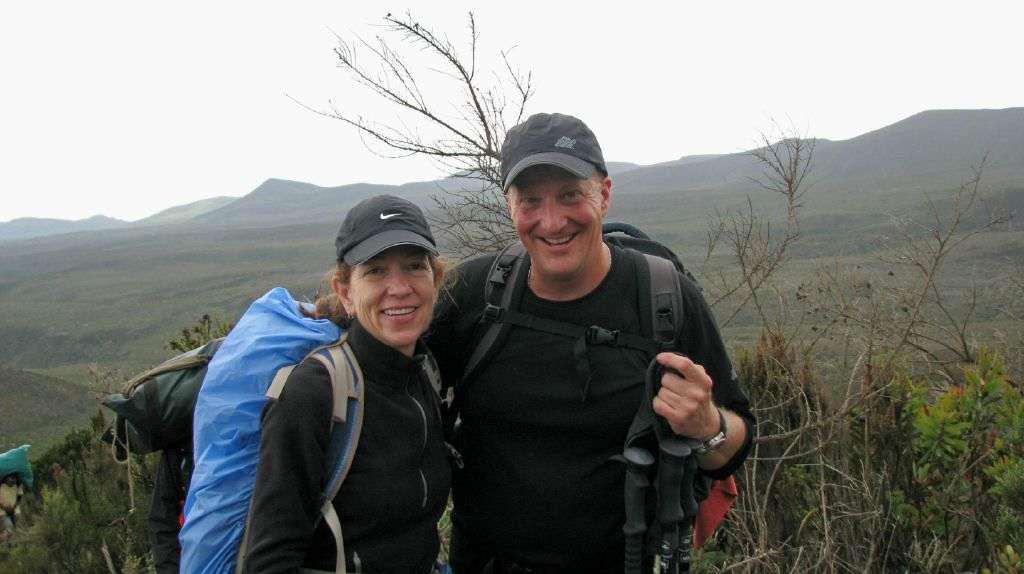 All of us wonder what we are going to do when our youngest child heads off to college, leaving an empty nest. A friend of mine came up with a pretty dynamic response to this bump in the life cycle: Why not climb the highest mountain in Africa? Lisa Dodge asked that question and she has returned to tell the tale. Hesitantly, because she is too modest to boast, but the story she told me bears repeating
All of us wonder what we are going to do when our youngest child heads off to college, leaving an empty nest. A friend of mine came up with a pretty dynamic response to this bump in the life cycle: Why not climb the highest mountain in Africa? Lisa Dodge asked that question and she has returned to tell the tale. Hesitantly, because she is too modest to boast, but the story she told me bears repeating
Dodge looks like many Scarsdale moms but under the appearance of a suburban matron lies fierce determination, resilience and fearlessness – some of the same qualities it took to raise her four children, but in her latest adventure she relied on these and more.
I asked her why she set out to climb the highest mountain in Africa and she explained that following a trip to Africa three years ago to tour Tanzanian villages and animal reserves she fell in love with the continent and set her sights on climbing Mt. Kilimanjaro, which is the highest free-standing mountain in the world.
She carefully planned the trip, and opted to go with the tour company she had used to go on safari during the previous
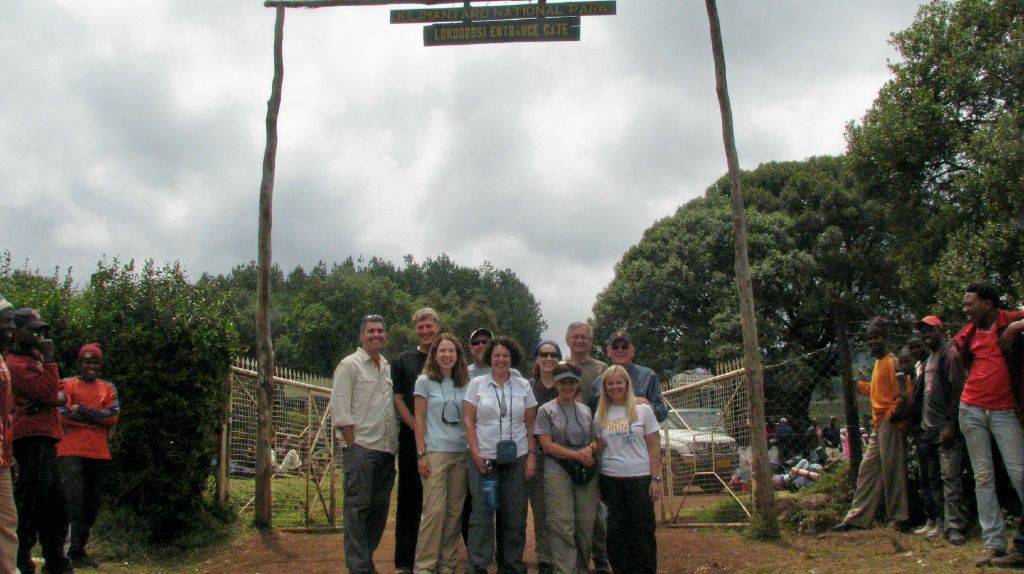
Dodge trained six days per week, following a routine that included time on the treadmill, 45 minute stints up and down the stairs, aerobics and outdoor hikes, some as long as eight hours in Bear Mountain State Park and the Ramapo Mountains. Her husband Warren, who had recently retired after 30 years on the job decided to join her on the trip and participated in the training and hikes to prepare for the trip.
They decided to make the climb in September as their children would be off at school and the dry weather in Tanzania in the fall was right for the climb. Since the country lies almost on the equator, the temperatures at the bottom of the mountain would range from 70 – 80 degrees – but at the top of the mountain they learned that the thermometer could go as low as zero.
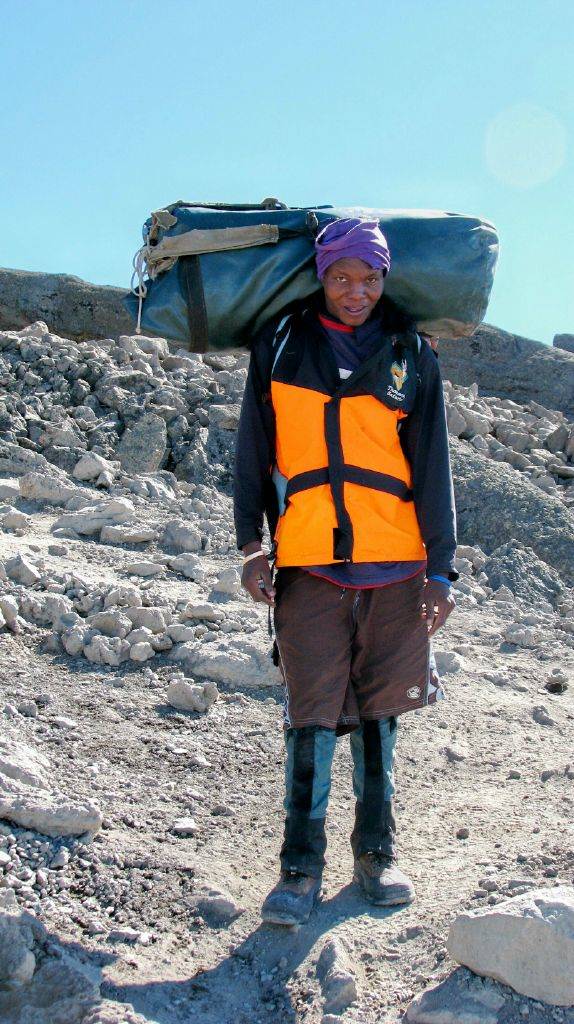
The group convened at the base of the mountain where the Dodge’s met four men and women who would be their soulmates for the next 9 days. They also greeted their 45 porters, 4 guides, 2 waiters, 2 cooks and the camp manager who would make up their climbing party.
The porters were impressive and each carried 33 pounds on their backs while climbing on steep terrain. In addition to carrying the food and equipment up and down the mountain the porters scrambled ahead of the group each day to erect the dining tent for lunch and prepare the meal, and then proceeded further up in the afternoon to set up the tents for sleeping each night.
Walking single file up the mountain, the group was trailed by “Godlove” a porter who carried a large pack of medical 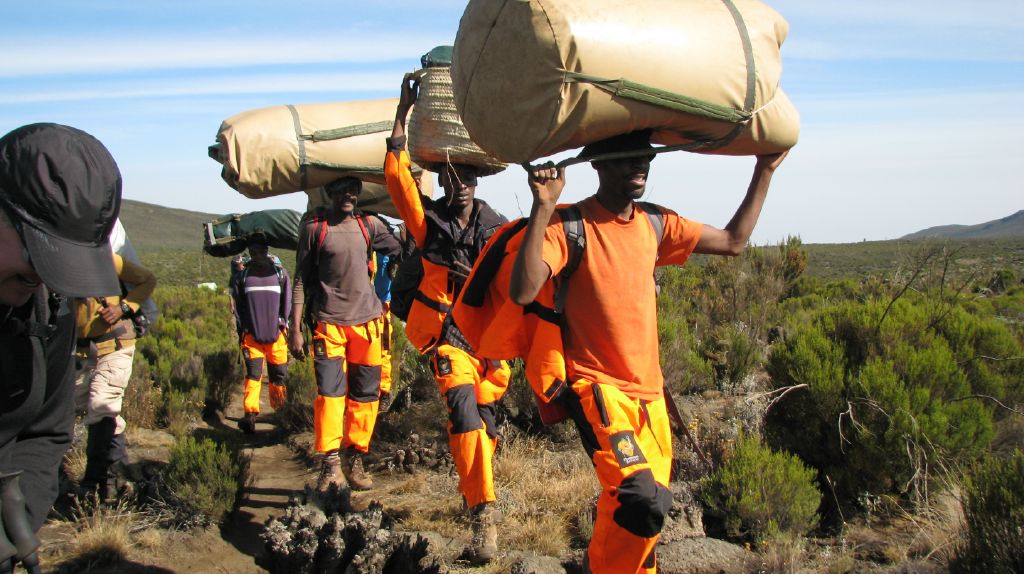 supplies including oxygen, a defibrillator and a hyperbaric chamber for those who became ill due to the altitude. The four guides have wildnerness training, akin to the EMT training done in the U.S. Given the dangers of the mountain, including the altitude and temperatures their skills are needed.
supplies including oxygen, a defibrillator and a hyperbaric chamber for those who became ill due to the altitude. The four guides have wildnerness training, akin to the EMT training done in the U.S. Given the dangers of the mountain, including the altitude and temperatures their skills are needed.
All meals were eaten in a large dining tent, with a table and comfortable dining chairs Dodge reports that the chef prepared delicious meals that included fresh fruit, vegetables, cheeses and meat that were carried up the mountain on the backs of the porters. For breakfast there was eggs, hot cereal, bacon and sausage and at lunch, homemade soups were served. Food service even included an afternoon break for tea and snacks. On one of the days during the middle of the trip, while the guests climbed, the porters took a steeper more direct path down to the bottom to restock their supplies.
At night the group gathered for dinner in the tent, wearing many layers of clothing, coats and hats. Following dinner they would be a briefed about what was in store for the following day. Since it was dark by 7:30 pm, they retreated early to their pup tents to sleep. Though the temperature fell into the teens, Dodge says she was never significantly cold at night. She was instructed to change into the clothes she would wear the next day before getting into her sleeping bag for the night. At the higher altitudes she would also sleep in her coat, hat and gloves. For additional warmth, the porters handed each climber a Nalgene bottle of boiling water to put into the bottom of their sleeping bag to serve as a heater. At some campsites a small basin of warm water was available for washing. Dodge also brought a supply of moist towelettes for daily washing.
The climb was not all in the up direction and the group ascended and descended at times to acclimate to the altitude. Though this added a few days to the trip it helped the climbers adjust so that almost all could withstand the trip to the top. Everyone took Diamox a drug that minimizes altitude sickness and each climber had to carry and drink four liters of water a day. Attached to her backpack, these Nalgene bottles added another ten pounds to the load Dodge carried each day.
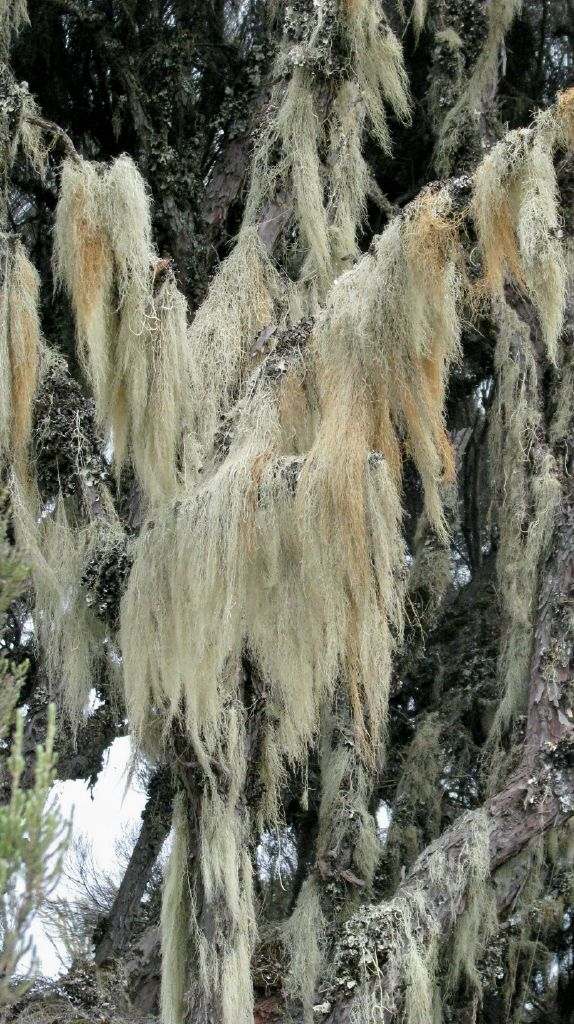
The total trip was nine days, with seven going up, and two to descend. Most days, the group trekked for 7 -8 hours, chatting with fellow climbers, observing the changing terrain, taking pictures and even stopping to talk with others along the path. At several points in the trip, the group encountered a party of climbers with a large movie camera who were making a documentary about the climb to be shown in Cannes in 2013.
The group began the trek in the rainforest which was lush with vegetation. As they climbed, they went through several zones with vastly different terrains. From the rain forest they proceeded to the heath zone with dramatic hanging moss. Next were the moorlands, which lead to an alpine desert of lava rocks and shale. As Mt. Kilimanjaro was formed by a volcano, the top is bare rock with no vegetation and is called the arctic zone.
During the climb the group ascended steep rock cliffs, and at one point, Dodge describes a two hour rock scramble done in the cold rain on slippery shale. Because of the danger involved, guides had to position themselves in front of and behind each guest at certain points, slowing the progress of the group.
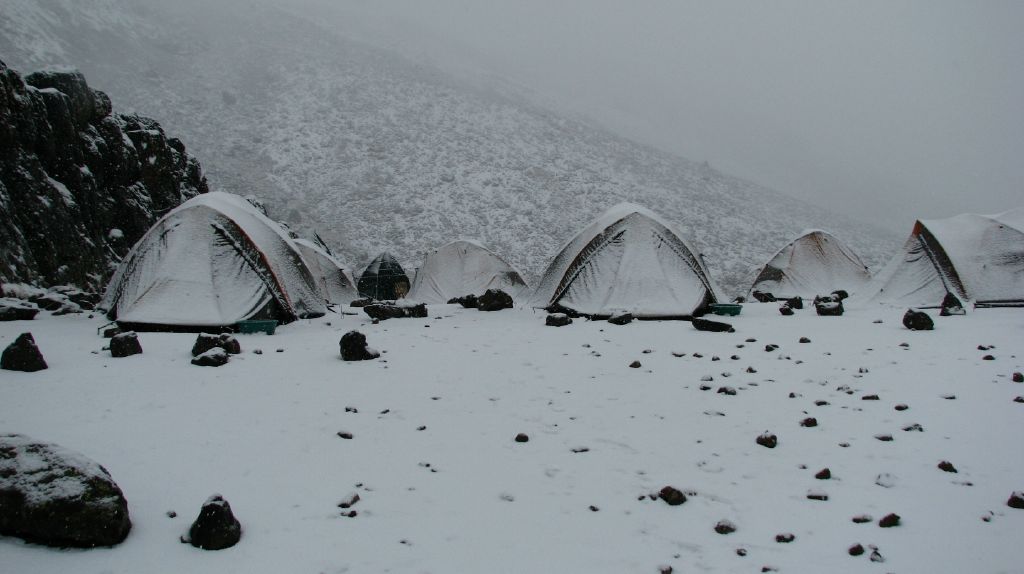
On day seven they were slated to climb to the top and arose at 4:30 am to begin the climb to the peak. Since they could not camp at the top, they needed to allow time to ascend and descend to camp in daylight. The ten-hour trip to the peak proved to be the most difficult as the group navigated a very narrow path and had to do switchbacks to manage the steep incline. At 18,000 feet, Dodge was hit by waves of nausea and feared she would not be able to continue. Her fellow climbers gave her gel blocks and ginger chews and she quickly recovered. The weather was gray and cold but when the group reached the top the skies cleared and the sun shown down upon them.
The view from the top was magnificent, with a deep caldera to their left and southern glacier fields on their right. They
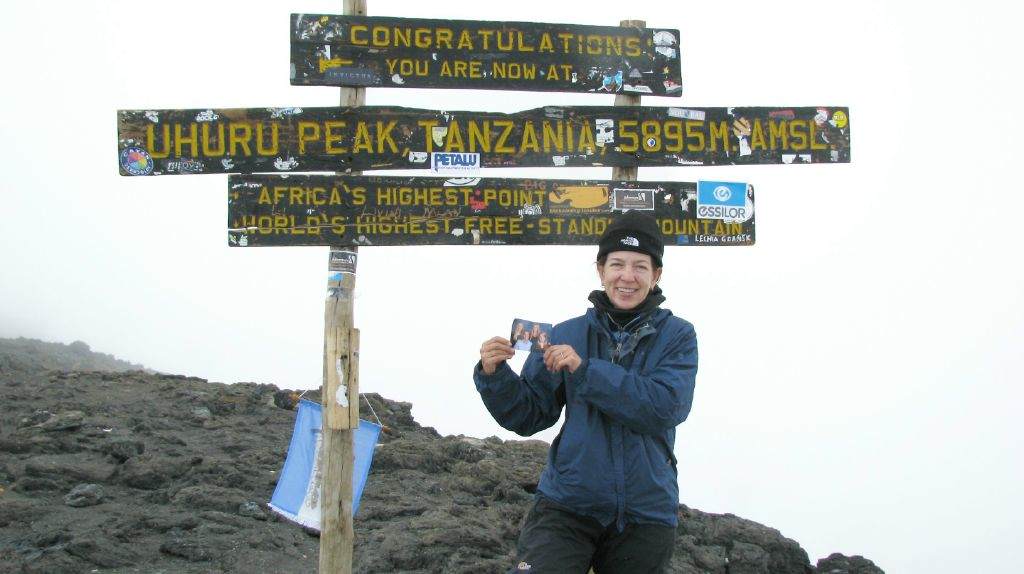
The trip down took only two days due to the aid of gravity and a more direct downward trail.
What did Dodge take away from the trip? She says it’s the hardest thing she’s ever done and was surprised at the rugged conditions and the severity of the weather. Though she felt well prepared the trip was physically and mentally challenging but thoroughly gratifying too. She says it was a life altering experience that taught her the power of determination. She feels you can do more than you think you can do, if you just put your mind to it. Was climbing the mountain harder than raising the four kids? Dodge says yes but is ready to take on her next challenge.
The Dodge’s have discovered that they love to hike and the two are already planning a trip to Peru’s Inca Trail to trek to Macchu Picchu next September. And after that? Dodge hopes to travel to Antarctica to complete her tour of the seven continents of the world.
To see live footage of the Dodge’s climb, click on the links below.







